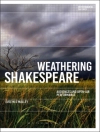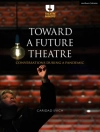White Cottage, White House examines how Classical Hollywood cinema developed and deployed Irish American masculinities to negotiate, consolidate, and reinforce hegemonic whiteness in midcentury America. Largely confined to discriminatory stereotypes during the silent era, Irish American male characters emerge as a favored identity with the introduction of sound, positioned in a variety of roles as mediators between the marginal and mainstream. The book argues that such characters function to express hegemonic whiteness as ethnicity, a socio-racial framing that kept immigrant origins and normative American values in productive tension. It traces key Irish American male types—the gangster, the priest, the cop, the sports hero, and the returning immigrant—who navigated these tensions in maintenance of an ethnic whiteness that was nonetheless ’at home’ in America, transforming from James Cagney’s ’public enemy’ to John Wayne’s ’quiet man’ in the process. Whether as figures of Depression-era social disruption, avatars of presidential patriarchy and national manhood, or allegories of postwar white flight and the nuclear family, Irish American masculinities occupied a distinctive and unrivaled visibility and role in popular American film.
Innehållsförteckning
Illustrations
Acknowledgments
Introduction
1. Our House to the White House: James Cagney at Warner Bros.
2. A New Deal in American Manhood: The Irish American Priest
3. Gentlemen and Gyms: Whiteness as Habitus in the Irish American Biopic
4. Green Streets: Irish American Cops and Spaces of the City
5. Home I’ve Come: Postwar Whiteness and Narratives of Return
Notes
Index
Om författaren
Tony Tracy is Assistant Professor of Film and Media Studies at the Huston School of Film & Digital Media, National University of Ireland, Galway. His previous books include
Masculinity and Irish Popular Culture: Tiger’s Tales (coedited with Conn Holohan) and
Historical Dictionary of Irish Cinema (coedited with Roddy Flynn).












